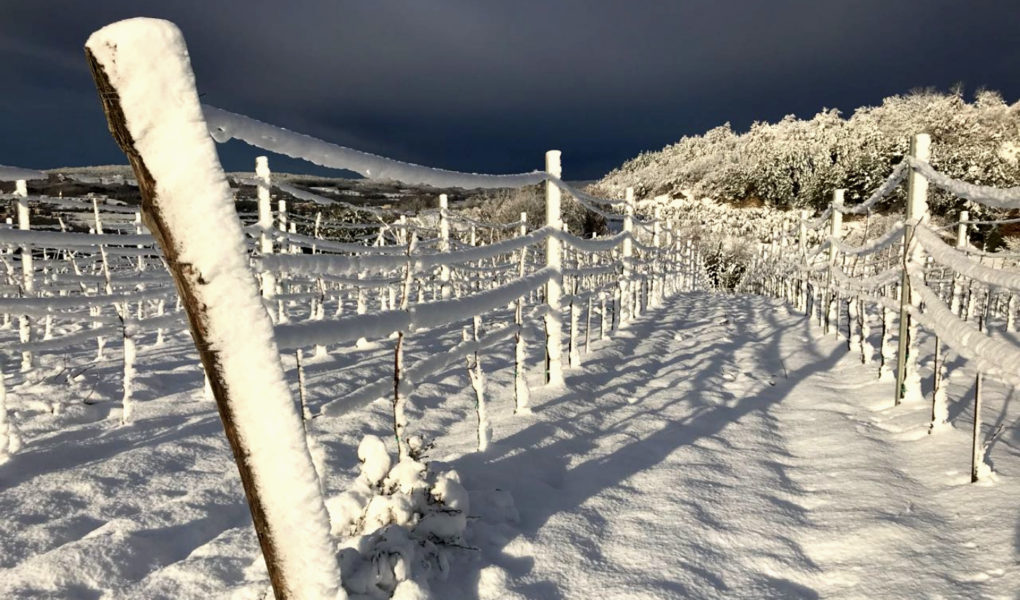This is the final article in a series of 12 reports following eight Croatian wineries over the past year. Consult each monthly installment for an overview of what is happening in the vineyard and winery at all times of the year.
The last month of the year is one of the busiest. Sales—the part of winery life few people think about—are humming leading up to the December holidays. Every wine shop and restaurant list needs to have a full selection of wines; festive dinners and tastings are on the calendar; and wine makers are busy meeting distributor representatives, sommeliers and chefs.
In the cellar, the 2021 wines have finished fermenting and will need attention, too. Some of these wines will be bottled early in the new year. But before then, they need to be fined, cold-stabilized, blended and filtered. (For more on fining, see our November update.)
Vina Kos
Vina Kos has a lot of visitors this month, and everyone is in the holiday mood. But half of Karlo Kos’s mind is on the new wines still in their tanks.
“For Kraljevina and Pinot Noir we want to bottle younger wine with fruity aromas, so we are preparing already for bottling,” Kos explained. He plans to bottle the white Kraljevina and their rosé around the end of January. He has started the fining process to remove proteins that can make the wine hazy. Now the wine is settling, and over the next few weeks Kos will cold-stabilize the wines.
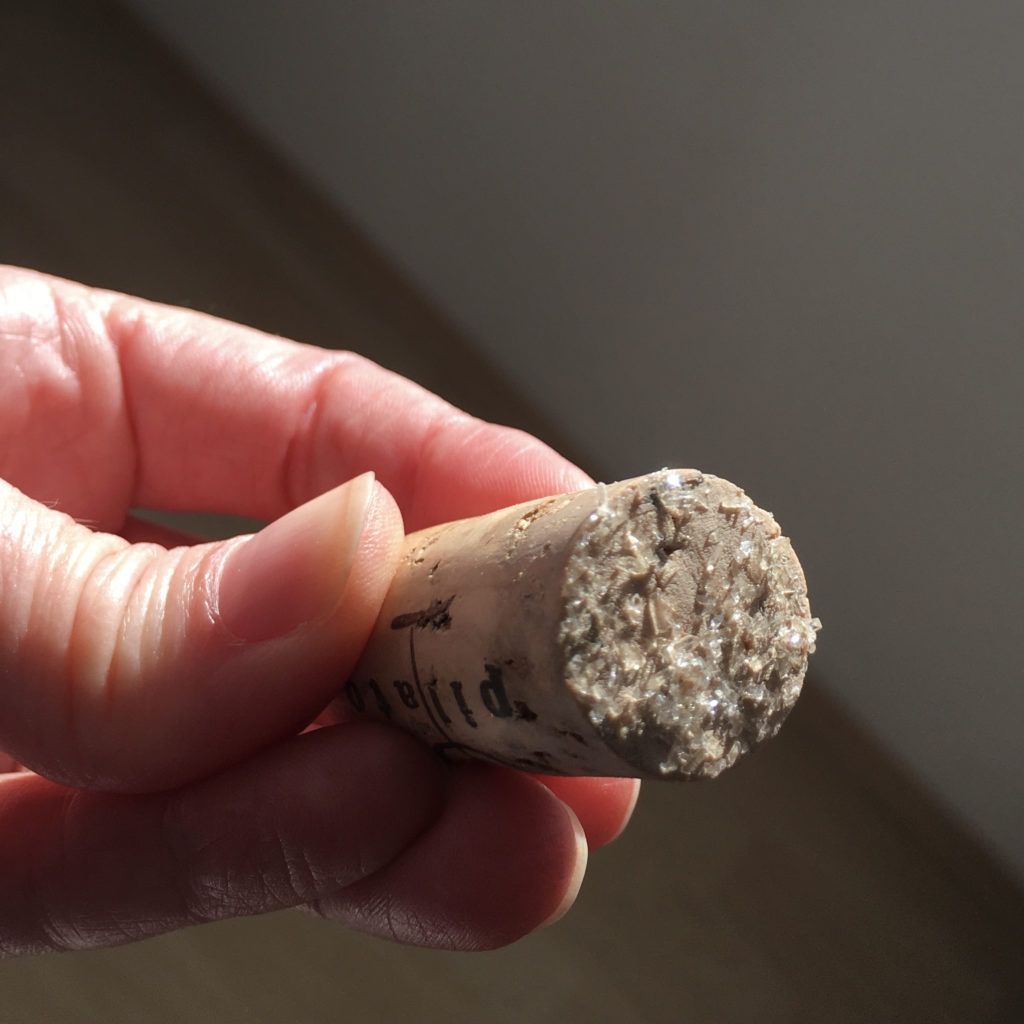
Tartaric acid is one of the natural acids in all wine. But unlike the other types, when tartaric acid gets cold for a prolonged period, it forms a solid. This takes the form of tiny, clear crystals called tartrate crystals, which can look like table salt or sea sand. If the wine maker does not expose the wine to a period of cold to cause the crystals to form before bottling, they will form after the consumer refrigerates the wine at home. If you have ever seen what looks like sand in your glass of white wine, or crystals stuck to the cork, this is what happened. The crystals are flavorless and completely harmless—try tasting them. But they can confuse people, says Kos. “It’s just normal chemical compounds from grapes and [winemaking] but it doesn’t look so great. We don’t want it in our bottles or in our glasses. That is why we make cold stabilization.”
To cold-stabilize, Kos simply stores his white wine in a tank set to about 4 degrees Celsius for 7 to 10 days. Young red wines can also be stabilized in tanks, but more often reds spend months in barrels, where they tend to cold-stabilize themselves over time. The crystals stick to the inside of the barrels and have to be removed with steam.
A Christmas Tradition
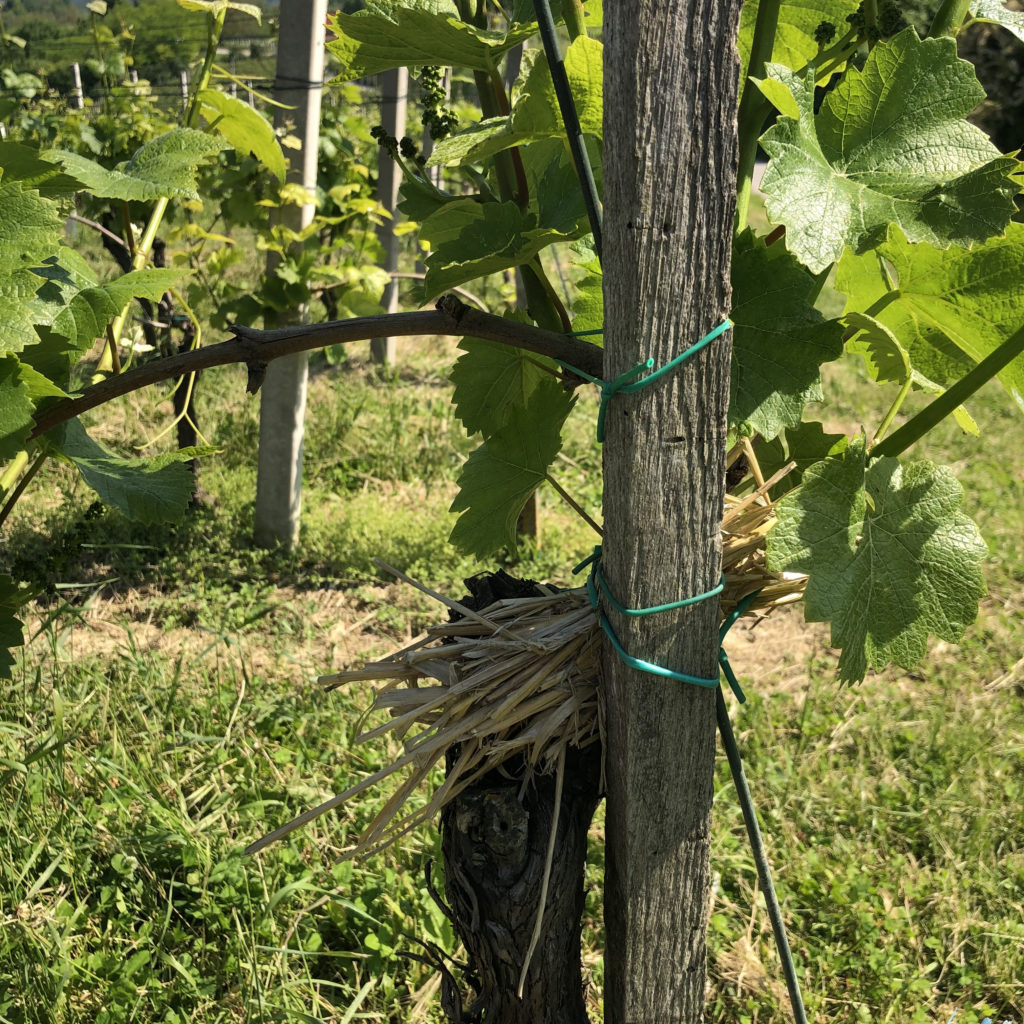
On a visit to Prigorje-Bilogora in May, I noticed a curious detail in the Kos Riesling vineyard. At the end of a row of vines, tucked between the last vine trunk and the post supporting it was a tuft of straw. It was an isolated occurrence. Was it to cushion the vine trunk? No, explained Karlo Kos a bit sheepishly—it’s for a little spiritual support.
Every Christmas Eve, some families in the region put a bag of hay beneath their dinner table. The hay refers to the the manger where Jesus was born. “It’s our family tradition,” said Kos. “My great grandfather did it like that, my grandfather, now my father.” He doesn’t know of many other families that still do this.
“On Christmas Eve, we put straw under the table, and after Kings Day we put the straw in the vineyard. When you start pruning and you [burn the canes], we put the straw from last year on the fire.” The new year’s straw is then tucked into place.
Galić
Slaven Jeličić is making big changes in the new year. As of 1 December, he left Galić to form a winemaking consultancy with enologist Ivona Jeličić, his wife, to be called Two Enologists. They will return to Dalmatia, where they are from, and settle in Split. Galić wines will no doubt continue to be made in the crisp, modern style Jeličić helped to pioneer there.
“Galić is an important winery and I worked there for 13 years,” said Jeličić. He knows precisely what his colleagues are doing in the winery now: “You try to keep your wine nice, fresh and without any reduction [off-flavors caused by lack of oxygen] so you taste everyday,” he says, referring to the 2021 wines in tanks and barrels. “You start to think about what will be your A, B, C wine . . . [You start] moving 2019 and 2020 wines into barrels and large tanks for further aging.”
When Jeličić talks about A, B and C wines, he’s referring to the blending that takes place in almost every winery. Most of us think of blending only when a wine lists a blend of different grapes on the label, such as 60% Merlot and 40% Cabernet Sauvignon. But even when a wine is 100% one grape, chances are it is blended from different vineyards of that grape. Wine makers frequently ferment grapes from different vineyards in separate tanks. This way, the vineyard terroir and the differing ripeness of the grapes develop individual flavors and textures during and after fermentation. Some batches are riper; some have higher acidity to balance that ripeness; and some may even get a brief oak aging.
Once the wines have settled, the winemaking team tastes them to evaluate which tanks taste best this vintage. Those are A wines. During blending, more of these go into the super-premium wines, with smaller amounts used in the everyday wines. Blending helps to create a well-balanced wine at any price level. Single-vineyard wines, on the other hand, are generally not blended—they are intended to be a “snapshot” of how a single, usually famous vineyard performs.
Benvenuti
Back in October, Nikola Benvenuti was trying to eke out another week or two of ripening for his Teran, before it rained. The plan worked out perfectly, he said: “It was really fantastic weather.” Now the Teran has finished fermenting, and is following the earlier wines through the winery process.
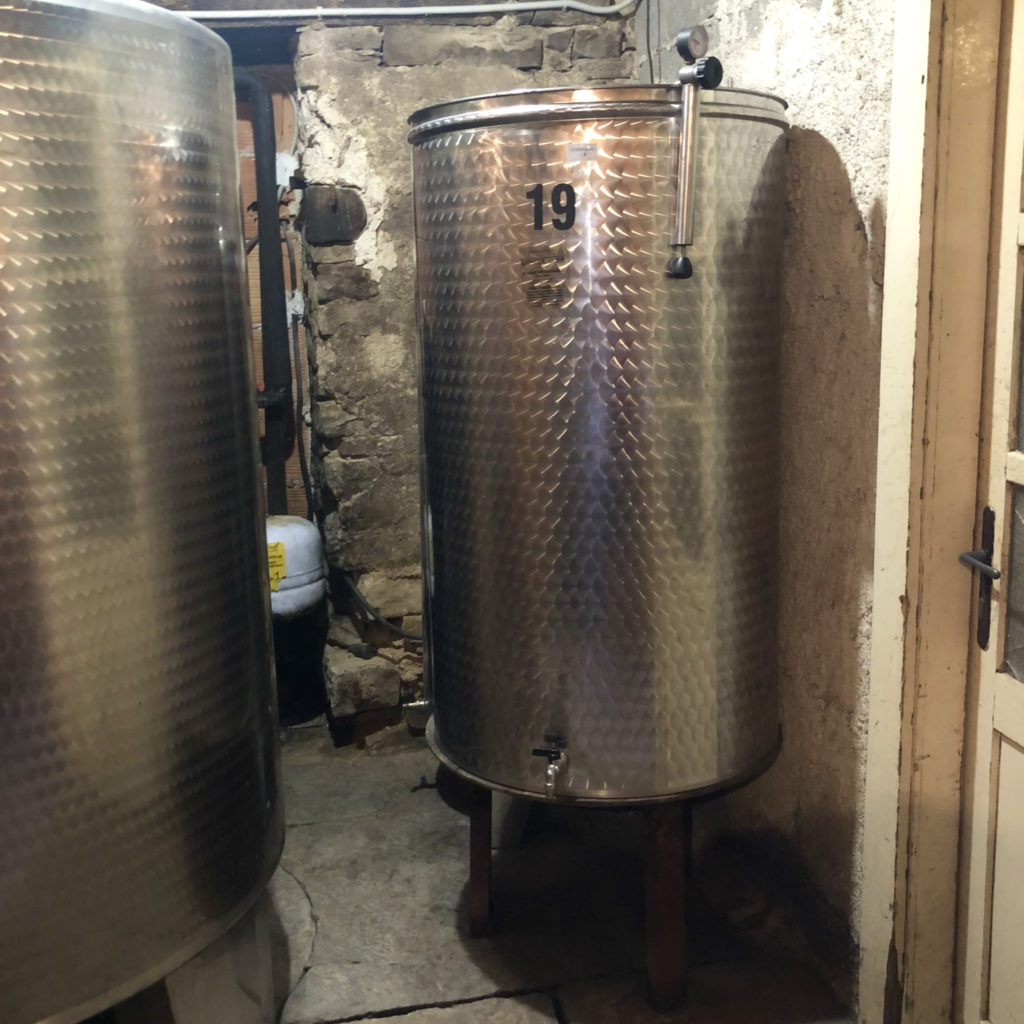
This year, even the sweet wines are ahead of the Teran. Usually these grapes, dried on straw or on mats after harvest, are ready to begin fermentation just before Christmas. This year, they were perfectly dry one month early, due to dry weather and consistent temperatures after harvest. Now they are already slowly fermenting in small tanks.
“It always takes some time because it’s very sweet, so the juice ferments quite slowly,” said Benvenuti. The yeasts have to work longer and harder to consume all this sugar. How long does it take? “It depends on the year,” he said. “I can say three months is normal, but it can be much longer.”
When the yeasts are exhausted and cannot convert any more sugar into alcohol, fermentation stops. The wines are left with enough residual sugar that they taste sweet, and a level of alcohol that corresponds to how soon the yeasts gave up. “We never have the same percentage of sugar and alcohol in the vintages. From 11 [percent] alcohol to 15 [percent] alcohol,” Benvenuti said. And it’s all up to the yeast.
For the dry wines, it is time for bâtonnage. At the end of December, the wines will settle for a month or so. Then comes fining with bentonite, cold stabilization, blending and filtering, before bottling in spring.
Testament
Testament has already sold out of their 2020 “fresh” wines—meaning the easy-drinking, unaged wines—so the winery team is busy preparing the 2021 wines for bottling early in the year. They will go to market in February.
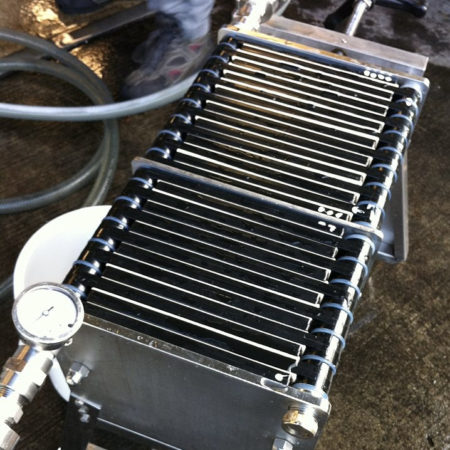
The final step before bottling is filtering. This works on a similar principle to filtering water or coffee. Most wines on the affordable end of the spectrum are filtered. “This type of wine we want crystal clear,” says Juraj Sladić.
There are benefits to filtering—that crystal-clear appearance, for one. Customers looking for a casual wine experience don’t want to worry about why the wine looks cloudy. Filtering also removes any stray yeast cells or bacteria. Basically, it creates a sterile atmosphere in the bottle, where little can go wrong. And wine makers can choose how thoroughly to filter a wine. Most small wineries do only what is absolutely necessary, to avoid accidentally filtering away flavor.
On the flip side, most wines that are made for aging, whether red, white or orange, are not filtered. They may have more tannins and a chewier texture as a result. They will also appear a little less bright and clear than filtered wines. Many of the compounds that are filtered out of a basic table wine are the compounds that allow a finer wine to develop deeper nuances over time in the bottle.
In the vineyard, the Testament team have already started the winter pruning, first the Pošip vines, then Babić. Soon it will be a new year; the vineyard cycle is starting afresh.
[Title photo: Benvenuti vineyards under late-winter snow. Winter dormancy is an important period of rest for the vines. Courtesy Benvenuti.]

